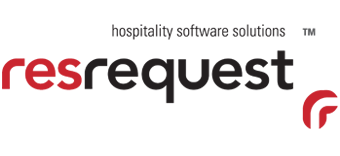Home → Wiki → User Access → Set up user access for agents
18.5. Set up user access for agents
User guide
Setup user access for agents
_____________________________________________________________
This document details the setup required for agent access to ResRequest.
STEP 1: Setup the user access group
User access groups determine the access permissions for users. Once a user group is created, users are linked to the user group which regulates the user permissions for that user. User groups determine the following access permissions:
- Which modules (also known as functions) a user is permitted to access, for example: availability calendar, standard report, occupancy calendar;
- What level of access a user is permitted in each module, for example: read, edit, update or management access;
- Which properties and accommodation types a user can access when viewing availability or creating bookings;
- What general access rules should be applied to the user, for example: reservation edit restrictions, calendar availability restrictions.
To create or edit user access groups:
From the main menu select: Administration > Setup > User Access
- To change general settings on the user access group, click the user group's name to populate the user group details in the new / edit area. Changes made to the user group are updated by clicking Save on the toolbar. Recommendations for agent access:
- Agents should not be set as a consultant.
- Agents should not be able to see overbookings.
- Payment Forced is used for agents who are required to pay by credit card when making a booking.
The credit card gateway must be setup for this function to be activated. - Agents should not be given any Reservation edit access.
- To change the modules the user has access to, select the Read-only / Update / Management columns to the right of the user group. Recommendations for an agent's module access:
- For an agent to have availability read-only access, set module access as: Availability calendar: READ.
- For an agent to have the ability to create bookings, set module access as: Availability calendar: UPDATE.
- Agent access to My Preferences is recommended.
- Read access to Standard reports and Reservation tabs can be permitted.
- Agent access to administration functions and other modules are not recommended.
- To change the properties and accommodation types that an agent can see / book, select the Prop / Accomm columns and edit accordingly.
STEP 2: Add a user
Once the agent (organisation) contact record is created, the individual user's login can be created.
For an accurate audit trail it is necessary that a user is defined per person i.e. a user record must be created per person at the agency.
To create the user record:
- Add the new individual contact (or locate the contact record from Find Contacts) for the contact who will be setup as a ResRequest user.
- Set an Agent relationship for the contact record. The agent relationship is the organisation that the user works for. The agent relationship determines the agent rules applied to bookings and data that the user is able to see, for example:
if the user is linked to Aardvark, when the user makes a booking Aardvark's rates, commissions and payment plans will be applied. Similarly when a user looks for "All" reservations, only "All reservations for Aardvark" will be displayed.
- Select the User role from the contact screen.
- To setup the contact as a user, click the User role option. This will set the user role as active and it will open the user options screen which includes a system-generated Username (this also acts as the password until the user resets it on login).
- Select the Access group: Agents (or your preferred user access group - as setup in Step 1 of this guide).
TIP: Once a user is setup you can reset the user's login details by selecting the User role and clicking the Reset User details.
- After the user role is saved an email can be sent to the user to notify them of their login details. Customise the email as required and send.
When you setup the user record on your local / offline system a data transfer must be run to update the web server with the user's login details.
_____________________________________________________________
Video tutorial
We have created a brief tutorial to help your agents understand how to work with ResRequest - feel free to point them to this video.
